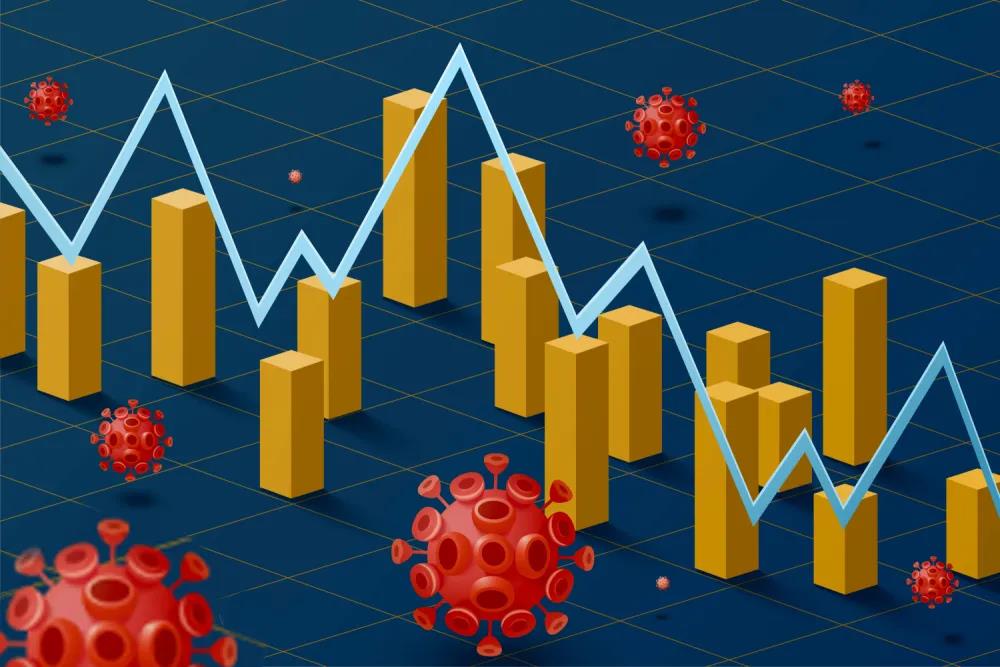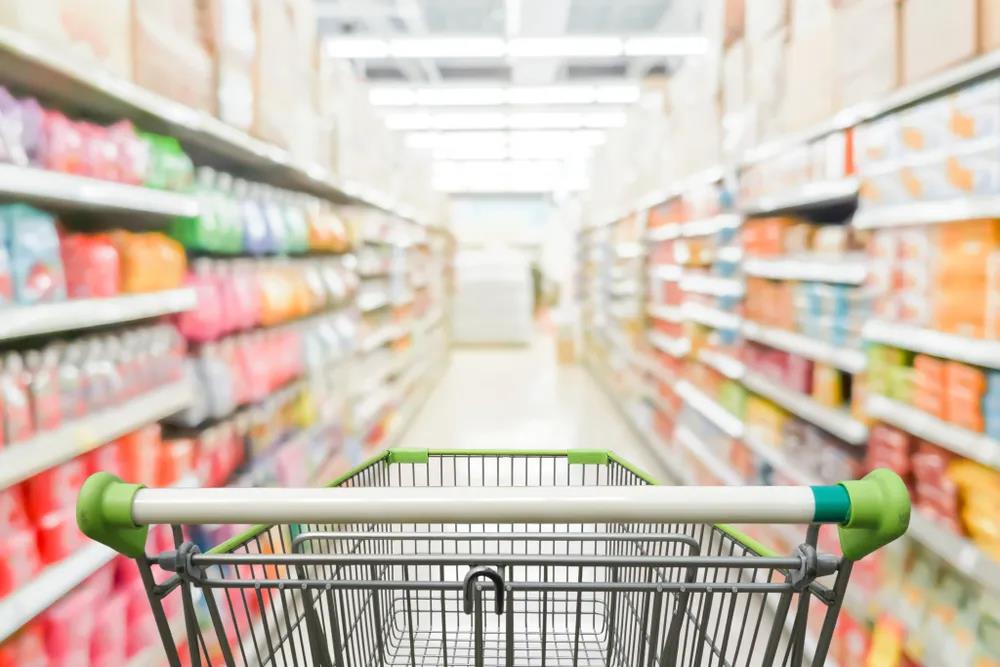As China’s covid outbreak gradually settles and work resumes, people are eagerly awaiting the full recovery of the country’s economy, only to see that the progress is not as fast as expected amid the uncertainty brought by the still ongoing pandemic in other parts of the world.
Chen Yuyu, applied economics professor with Peking University’s Guanghua School of Management, shares his insight into key questions such as whether China’s economy can recover shortly and what key policies in the later half of 2020 deserve attention in the following article.

GET IT RIGHT
I have three main observations regarding the current state of China’s economy:
A. The covid-19-induced economic suspension is over and the country is currently focusing on both outbreak control and the resumption of normal economic activities.
B. The current situation is complicated by the aftermath of the first quarter performance and the impact of medium- and long-term structural adjustments undergone by China’s economy.
C. The development of global pandemic brings huge uncertainty to China’s economy as well as the world’s.
Therefore, it is my opinion that the idea that China’s economy will recover and go back on track as long as production resumes and people go back to work is rather simplified. An accurate and dynamic observation of the real situation is crucial if we want to make sure our diagnosis of the current economy is not incorrect or even downright wrong.
One mistaken idea is that China’s economy is still in a grave situation while the country’s overall performance against the outbreak is more than adequate. Official data show that China's fixed-asset investment (FAI) declined 16.1 percent year on year to 8.41 trillion yuan (about 1.19 trillion U.S. dollars) in the first quarter of 2020. Between Jan. and April, the figure declined 10.3 percent. Between Jan. and May, the decline shrunk by four percentage points to 6.3 percent. Focusing only on “decline” tend to generate pessimistic interpretations, but a dynamic analysis will help us see that the decline was shrinking each month, which means that the monthly FAI was actually rising fast.
Another naive idea is that the omnipotent government can keep on carrying out new policies to save people from all kinds of trouble. While it is true that a series of policy tools presented in the first half helped the economy perform better in April and May amid the heavy blow dealt by covid-19, many moves, such as increased government bonds and deficit, take time to see effect and people should be patient about the benefits of various stimulus policies. Right now, our efforts should be focused on efficient policy implementation instead of the anticipation of more policies.
WEAK RECOVERY?
The real worry about China’s economy lies in its exterior — the turbulent global situation and the inadequacy of global response to the pandemic. The International Monetary Fund's chief economist predicted a 4.9 percent decline in the global economy for 2020, down from the 3 percent the organization projected in April. It projects that the U.S. economy and the eurozone will shrink 8 percent and 10.2 percent respectively, both down from previous predictions, in light of continued negative impact of the pandemic and social distancing rules. As a consequence,China has to cope with issues such as the weak demand of Chinese products and rising costs of global industrial chains.
It should be noted that China is the only large economy that, according to the IMF predictions, which will be of significant importance to the world economy. Though no official target was set by China’s authorities, many people expect the country’s economy to expand by more than one percent, which will require a full recovery in the later half.
Then why is it that many people don’t feel a strong sense of economic recovery and can’t help worrying?
The first answer is uncertainty, a big enemy to investment and consumption. With China still on high alert of potential cluster infections and the world deep in the battle against the pandemic, uncertainty is forcing people to postpone spending and investment plans. Despite lowered incomes, many people see greater bank deposit as a result of less luxurious and unnecessary spending, and firms would rather wait longer to invest in a new production line. Therefore,demand in China appears less vigorous. Uncertainty from the global pandemic will be the biggest factor affecting China’s overall economy.
Various policies carried out in the first half should, to some extent, reduce the impact of this uncertainty, but whether it is enough is still too early to tell. I think China will adjust its macro-economic policies based on economic performances in the second and third quarters.
If investment remains weak and government and state-owned enterprises’ investments are not enough to make up for the decrease in private investment,stronger stimulus policies will be needed for the later half. We should pay close attention to uncertainty,the biggest killer of economic prosperity.
Secondly, people’s worries are tied to China’s changing economic structures. Fast rising income per capita will lead to changes in people’s demand structure,which will, in turn, force production and industrial structures to change accordingly.
Covid-19 has been accelerating changes in this demand structure. We need to tell industries that are shrinking from those on the rise. Despite a terrible first quarter, we should not blindly stimulate demand, but should embrace tough decisions regarding firms’ future development. Right now, we should still prioritize the role of the market in resource allocation and give enough space for entrepreneurs to explore and for consumers to decide. Market vigor should not only rely on stimulus but, more importantly, lie in the natural market-led process of competition and survival. This structural adjustment will be a huge challenge and firms should know that they cannot count on government policies to save them.
Last but not least, social distancing rules, necessary as they are, will increase the costs of trade in social and economic activities for a long time, and these costs inflicted on firms are not calculated beforehand. As a result, economic recovery seems to be less than expected,and hence, people’s worries.

POLICY SUPPORT
Polices for the later half of 2020 should focus on three aspects.
A. Support is the key. Different from financial and monetary crises, this pandemic is from outside the economic system and is causing disruption and destruction to our normal economic activities. Some firms are hit harder than others, and it is crucial to ensure timely and reasonable policy support for industries,firms and individuals in need as a key government task for the near future. Efforts to safeguard people’s livelihoods and employment are particularly important.
B. Full implementation of policies that stimulate the economy. In particular,innovative fiscal policy tools should be carried out to make full use of the country’s optimal fiscal records. Once in effect, these tools will lead to soaring infrastructure investment and shore up relevant industries such as agriculture and forestry as well as social investment in general. Meanwhile, the government should focus on managing the confidence of investors and people in general so as to reduce the negative impact of covid-19-induced delay in spending and investment. One way to do this is through greater transparency in publicizing detailed economic data and policy support outcomes to reassure people. Increased public and government investment will stimulate grassroots confidence, and people with full knowledge of government policies are more likely to judge economic situations correctly and less prone to uncertainty. Times of crisis call for greater reforms and law enforcement to protect market order, and normal market order will help stabilize people’s expectations.
C. Set up a sound market system to enable firms to redistribute resources more independently. Changes in China’s demand structure and industrial structure are already under way before the covid-19. How should these structural changes go is a question best left to the market, not government policies. What the government can do is to better protect entrepreneurs’ spirit of exploration and enforce the bankruptcy law. Life and death are the circle of life, and no firm can live forever. Real economic vigor comes from a sound environment of stable legal frameworks and full protection of rights where those participating in market activities have steady and long-term expectations.
Only then can people make wise decisions to invest in newer quality products and services of higher quality in the most promising industries that can satisfy people’s demand. Meanwhile, industries of excessive capacity will have to shrink. The pandemic will accelerate industrial structure adjustments, and not all businesses will be granted a new life after this. A sound stimulus mechanism will help boost China’s resource redistribution.
Such a mechanism should focus on policies that encourage firms’ innovations in technology and business modes, financial services that can help traditional businesses transition, tax benefits as a stimulus, and efforts to deepen reforms. A stimulus mechanism will play a crucial role in boosting people’s confidence in the economy as well as entrepreneurs’ confidence in investment.
 Programs
Programs